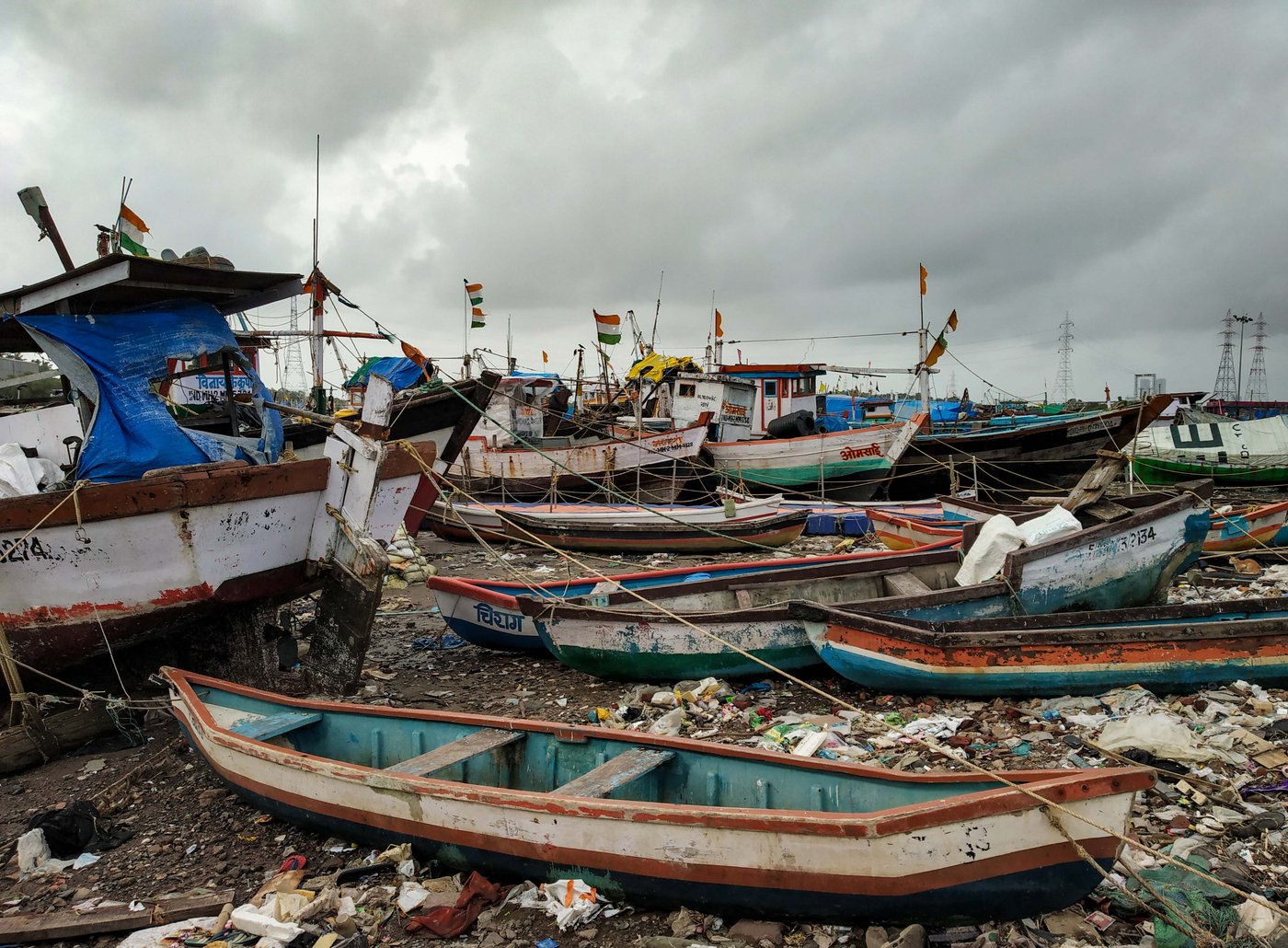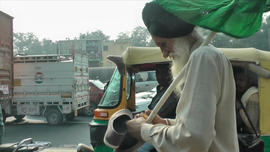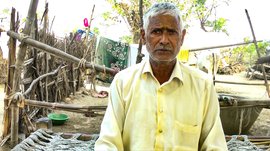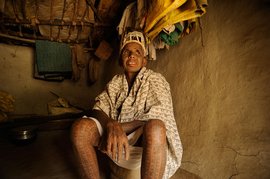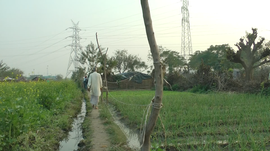At Versova jetty one morning some months ago, I asked Ramji bhai , who was sitting on a rock at the edge of the creek, what he was doing. “Timepass,” he replied. “I’ll take this home and eat it.” He pointed to a small tengda (a type of catfish) he’d just caught. I saw other fishermen cleaning nets they had floated in the creek the night before – they had caught loads of plastic but no fish.
“Fishing in the khadi [creek] today is barely possible,” says Bhagwan Namdev Bhanji, who has lived all his 70-plus years in Versova Koliwada, a fishing village in north Mumbai’s K-West ward. “When we were young, the coast here was like the one in Mauritius. If you threw a coin into the water, you could still see it… The water was that clean.”
The fish that do find their way into the nets of Bhagwan’s neighbours – nets now cast deeper into the sea – are often smaller too. “Earlier, we used to get bigger pomfret, but now we’re getting small ones. It’s had a huge impact on our business,” says 48-year-old Priya Bhanji, Bhagwan's daughter-in-law, who has been selling fish for 25 years.
Almost everyone here – the koliwada is home to 1,072 families or 4,943 people involved in fishing (2010 Marine Fisheries Census) – has a story to tell of the vanishing or shrunken fish. And the reasons they point to range from local-level pollution to global-scale warming – both have combined at Versova to bring the impact of climate change to the city’s shores.
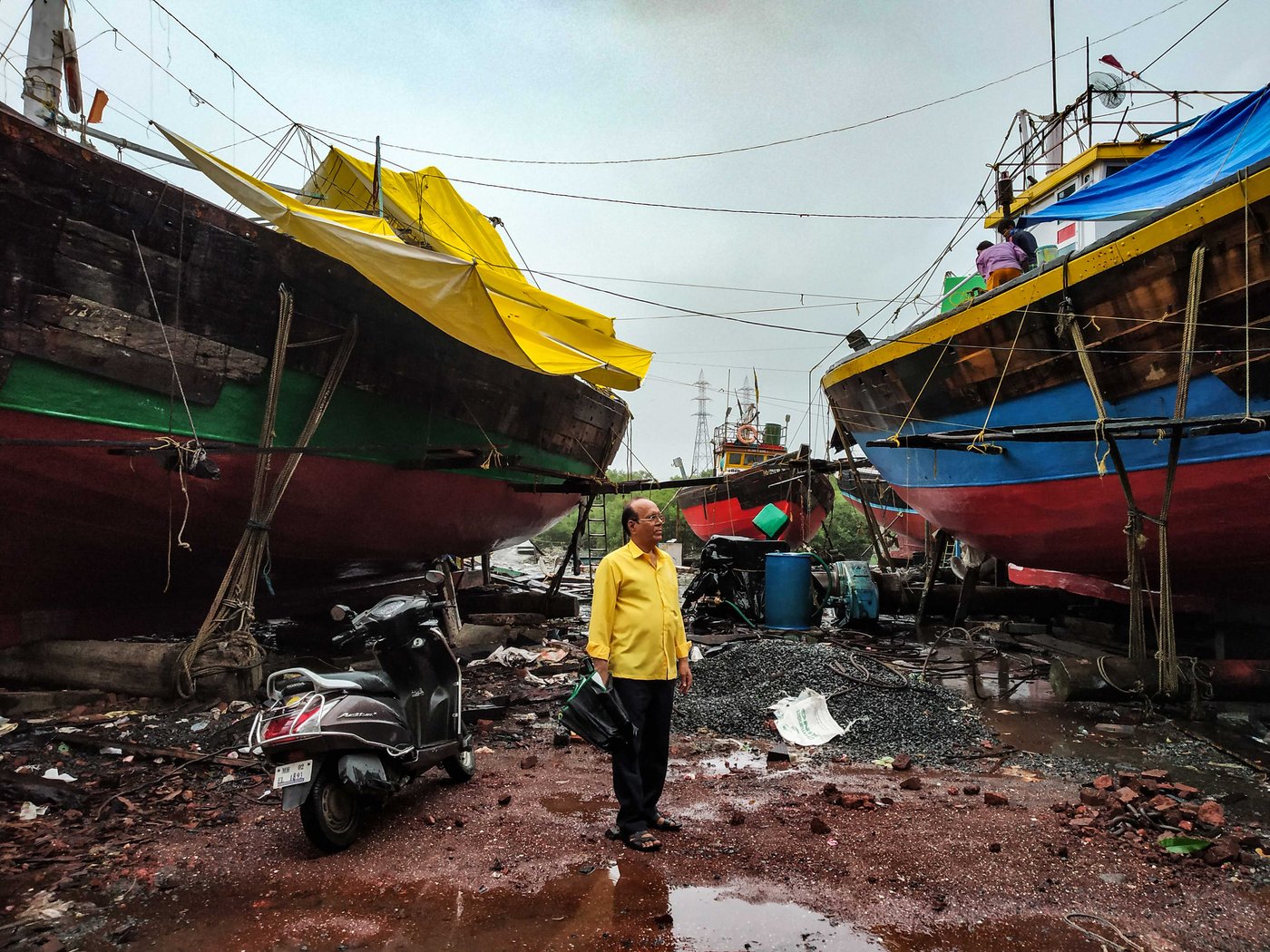
Bhagwan Bhanji in a yard where trawlers are repaired, at the southern end
of Versova Koliwada
In the waters near the shore, in the Malad creek (that empties into the sea at Versova), the bhing (giant herring) , pala (hilsa shad) and other fish that were easily caught by residents of this koliwada around two decades ago seem to have been decimated by immediate human intervention.
Untreated sewage from around 12 nallah s (open sewers) flowing from surrounding localities, industrial sludge, and effluents from two municipal wastewater treatment facilities in Versova and Malad West, now drain into the once-clear creek of Bhagwan’s memory. “There is hardly any marine life. All this pollution goes 20 nautical miles into the sea. Because of everyone's sewage, dirt and garbage, a clear creek has become a gutter," says Bhagwan, who is known in the neighbourhood for his knowledge of Koli history, culture and local politics. Until some years ago, he managed the shore tasks – drying the fish, making nets, supervising repairs – for his late brother’s two fishing boats.
The murky waters mean low levels of dissolved oxygen in the creek and near the shore, along with a large number of faecal bacteria – and fish cannot survive this. A 2010 paper by scientists at the National Environmental Engineering Research Institute (NEERI) says, “The condition of Malad creek is alarming as [there is] no DO [dissolved oxygen] in the creek during low tide... During high tide the condition was slightly better…"
Pollution of the oceans intersects with climate change to create long-lasting impacts. Increased development activities, coastal and marine pollution (more than 80 per cent originates from land-based sources) and climate change’s impact on ocean currents will accelerate the spreading of marine dead zones (oxygen-dead areas), observes a 2008 book by the United Nations Environment Programme titled In Dead Water: merging of climate change with pollution, over-harvest and infestation in the world’s fishing grounds. “… the effects of pollution,” the book says, “are exacerbated by the destruction of mangroves and other habitats due to the rapid construction taking place on coastlines…”
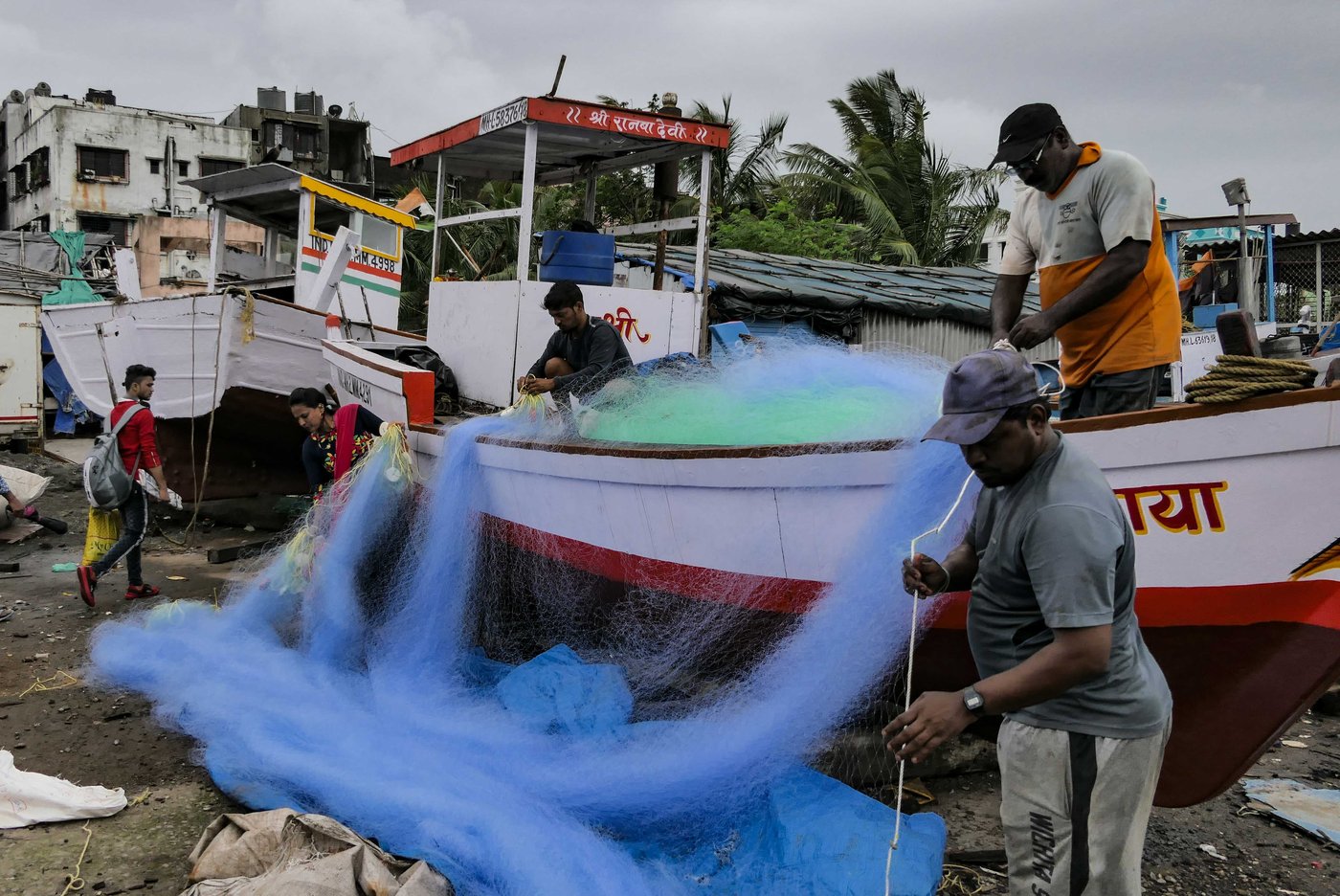
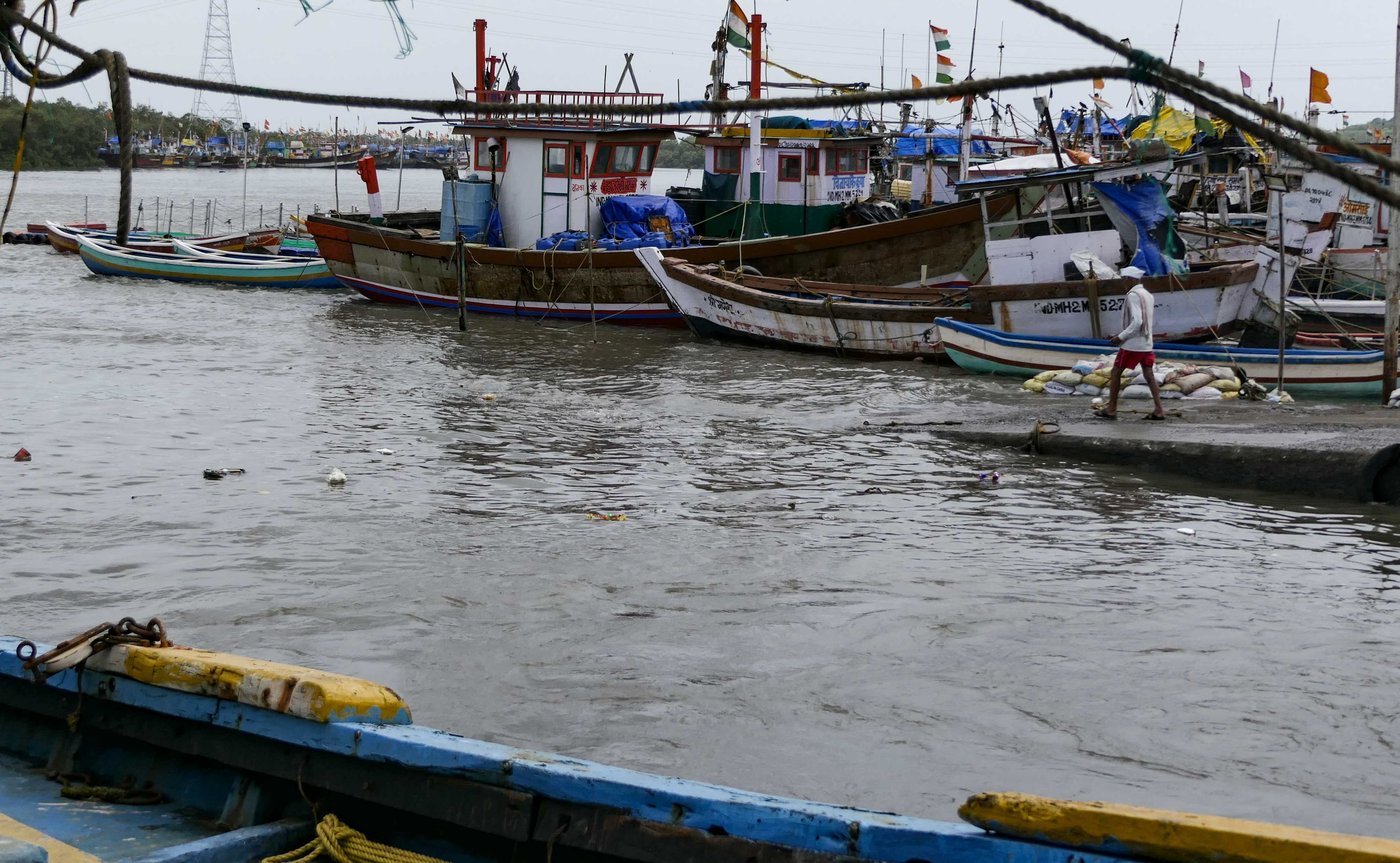
Left: Struggling against a changing tide – fishermen at work at the koliwada. Right: W ith the fish all but gone from Malad creek and the nearby shorelines, the fishermen of Versova Koliwada have been forced to go deeper into the sea
In Mumbai too, over the years, vast tracks of mangroves have been cleared for roads, buildings and other projects. Mangroves are critical spawning grounds for fish. A 2005 paper in the
Indian Journal of Marine Sciences
notes, "Mangrove forests not only support coastal marine organisms, but also protect the coast from erosion and serve as breeding, feeding and nursery grounds for estuarine and marine organisms.” In just 11 years from 1990 to 2001, the paper adds, a total of 36.54 square kilometres of mangroves was lost in just the Mumbai suburban region.
"The fish used to come to the coast to lay their eggs [in the mangroves], but that cannot happen now,” Bhagwan says. “We have destroyed as many mangroves as we could. Very few are left. The buildings on the coastline in the suburbs and entire localities here, like Lokhandwala and Adarsh Nagar, were mangroves earlier.”
As a result, with the fish all but gone from Malad creek and the nearby shorelines, over the years, the fishermen of Versova Koliwada have been forced to go deeper into the sea. But in the deep seas too, rising sea temperatures, increasing cyclonic storms, and over-fishing by trawlers have hit their business.
“Earlier, they didn’t have to go deep sea fishing [more than 20 kilometres from the shore] because the coastal ecology was so rich,” says Ketaki Bhadgaonkar of Bombay 61, a group of architects studying the effects of coastal pollution and climate change in Versova Koliwada. “Deep sea fishing has made fishing economically unviable because it involves a lot of investment in big boats, a crew and so on. And fishermen are not even certain they’ll come back with a bigger fish catch.”
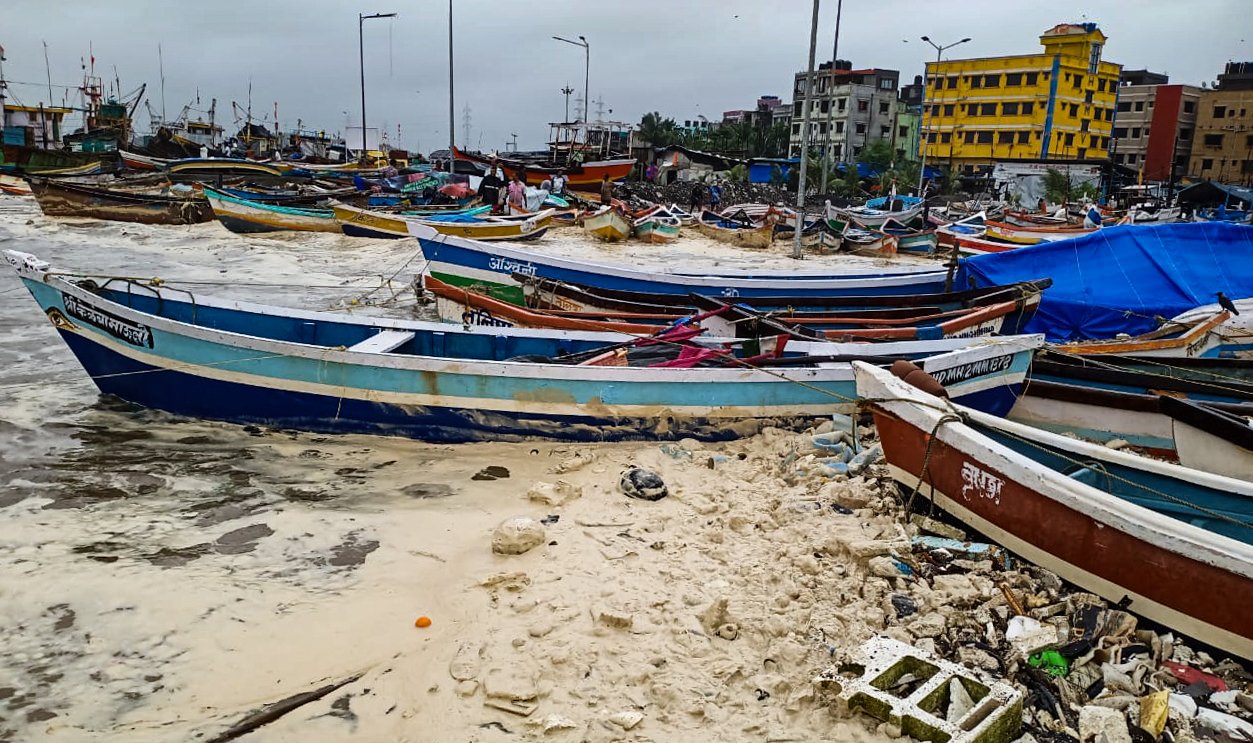
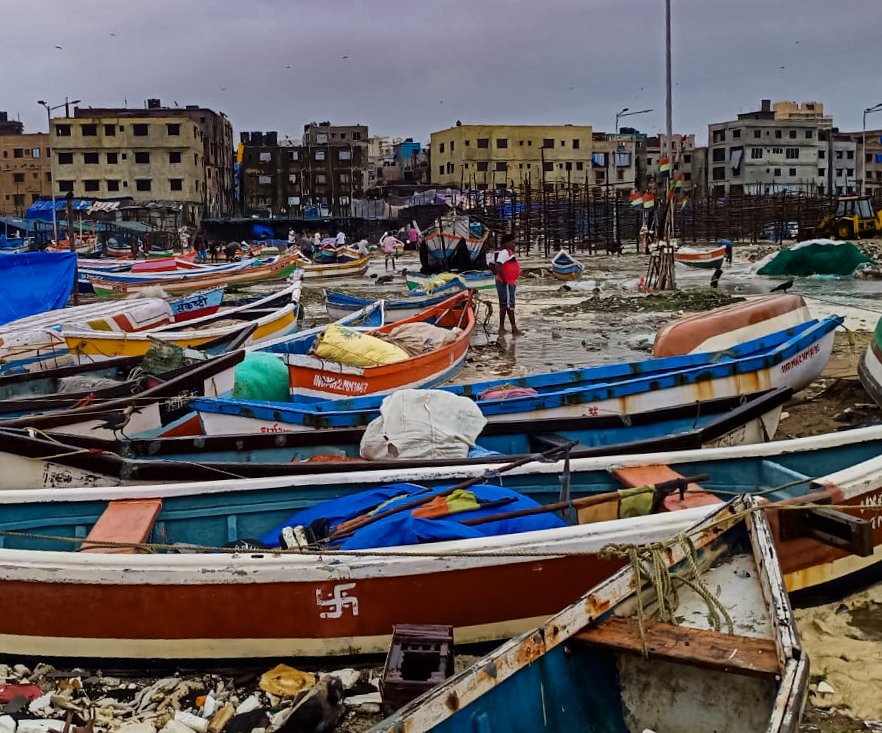
Photos taken by Dinesh Dhanga, a Versova Koliwada fisherman, on August 3, 2019, when boats were thrashed by big waves. The yellow-ish sand is the silt from the creek that fishermen dredge out during the monsoon months, so that boats can move more easily towards the sea. The silt settles on the creek floor because of the waste flowing into it from nallahs and sewage treatment facilities
Deep sea fishing has become uncertain also due to the warming of the Arabian Sea – its surface temperature has risen by 0. 13 degree Celsius per decade on average between 1992 and 2013, shows a paper in the journal Geophysical Research Letters . This has affected marine life, says Dr. Vinay Deshmukh, who was with the Mumbai centre of the Central Marine Fisheries Research Institute (CMFRI) for over four decades. “Sardines, one of the predominant fishes in the south [of India], started moving north [along the coast]. And mackerel, another fish from the south, started moving into deeper waters [below 20 metres].” The northern Arabian Sea waters and deep sea waters remain relatively cooler.
The warming of Mumbai’s and Maharashtra’s sea waters is part of an interconnected global pattern – in 2014, the Intergovernmental Panel on Climate Change (IPCC) estimated that the upper 75 metres of the world’s oceans were warmed by 0.09 to 0.13 degree Celsius per decade between 1971 and 2010.
This rising sea temperature has altered the biology of some fish – a significant and “irreversible change” says Dr. Deshmukh. “When the waters were relatively cool and the temperature was around 27 degrees, fish matured late. As the waters become warmer, the fish started to mature early. That is, they started producing eggs and sperm early in their life cycles. When that happens, the body growth of the fish slows down. This we have clearly seen in bombay duck and pomfret.” So a mature pomfret that was roughly 350-500 grams three decades ago, estimate Dr. Deshmukh and local fishermen, is typically just 200-280 grams today – shrunk in size due to warming and other forces.
A mature pomfret that was roughly 350-500 grams three decades ago, is typically just 200-280 grams today – shrunk in size due to warming and other forces
But, in Dr. Deshmukh’s view, overfishing has been an even bigger culprit. The number of boats has increased and the time that trawlers (some owned by koliwada locals too) and other big boats spend at sea has gone up too. In the year 2000, he notes, these boats would spend 6-8 days at sea; this rose to 10-15 days and is now 16-20 days. This has added to the pressure on the existing fish stock in the sea. And, he says, the floor ecology has degraded due to trawling, “which scrapes the ground [sea floor], uproots plants and does not allow the organisms to grow naturally."
The total fish catch in Maharashtra, Deshmukh says, touched a high in 2003, when it was around 4.5 lakh tonnes, the highest in its documented history since 1950. With overfishing the catch went down every year after that – it was 3.81 lakh tonnes in 2017.
“Over-harvesting and bottom trawling are degrading fish habitats and threatening the entire production of ocean biodiversity hotspots,” says the book In Dead Water , “making them more vulnerable to climate change.” And, it says, the impacts of human activity (including pollution and mangrove-destruction) will be further compounded by sea level rise and increased frequency and intensity of storms.
Both are in evidence in the Arabian Sea – and thereby in Versova Koliwada. "...anthropogenic forcing has increased the probability of late-season ECSCs [extremely severe cyclonic storms] over the Arabian Sea…” says a paper published in Nature Climate Change in 2017.
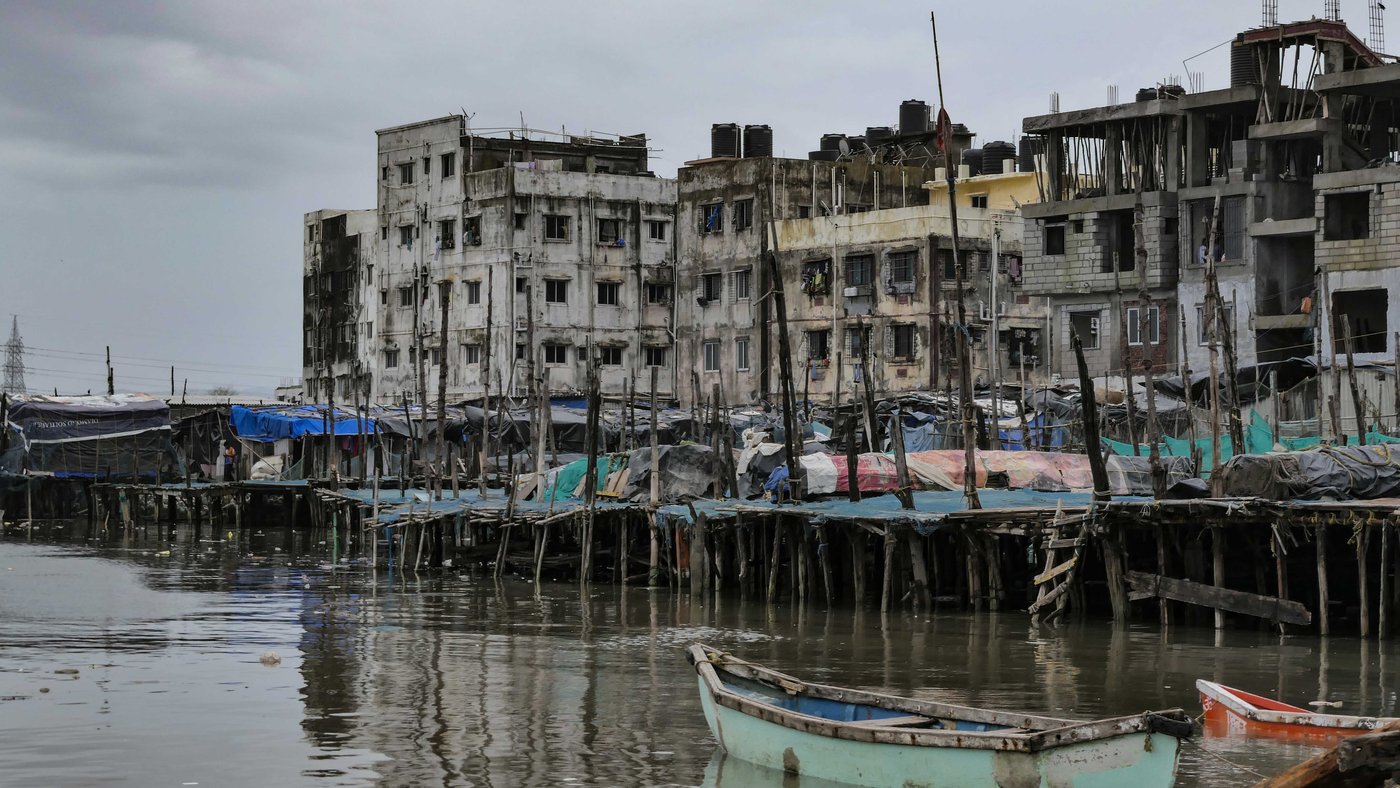
Extensive land reclamation and construction along the shore have decimated mangroves, altered water patterns and severely impacted Mumbai's fishing communities
These storms hit fishing
communities the hardest, observes Prof. D. Parthasarathy, convenor of the
Climate Studies department at the Indian Institute of Technology, Bombay.
“Because of the decline in the fish catch, fishermen are forced to go deeper
into the sea. But [some of] their boats are quite small and they are not
equipped for the deep sea. So when there are storms and cyclones, they get
affected more. Fishing is becoming much more uncertain and much more risky.”
Rising sea levels is another linked problem. Along the Indian coast, the levels have risen by 8.5 centimetres during the past 50 years – or around 1.7 millimetres per year (said the government in the Rajya Sabha in November 2019, responding to a question raised in Parliament). Global sea levels have been rising at an even higher rate – around 3 to 3.6 mm every year over the past 25 years, say IPCC data and a 2018 paper in a journal titled Proceedings of the National Academy of Sciences (USA). At this rate, sea levels around the world could rise by around 65 centimetres by 2100 – though the rise varies regionally, depending on a complex interaction of tides, gravity, the Earth’s rotation and so on.
A rise in the sea level, Dr.
Deshmukh warns, “is especially dangerous for Versova because it is situated at
the mouth of the creek and wherever the fishermen keep their boats, they are
vulnerable to stormy weather.”
Many in Versova Koliwada have observed these rising sea levels. Harsha Rajhans Tapke, who has been selling fish for 30 years, says, “Because the fish catch has become less, people [builders and locals] have reclaimed the land where we would dry our fish and started building houses there [on the sand].. With this reclamation, the water level in the creek is rising, and we can see that along the shore.”
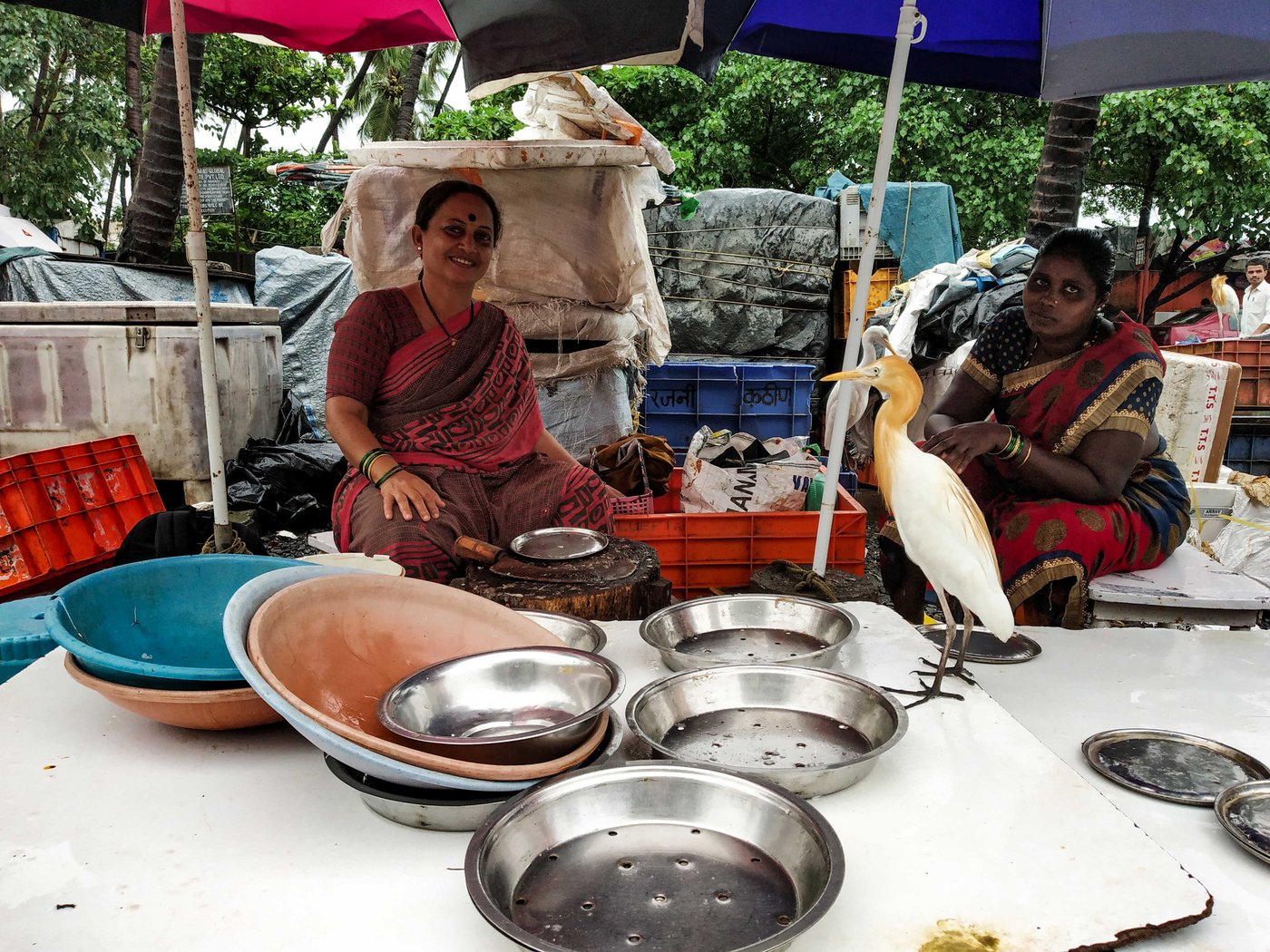
Harsha Tapke (left), who has been selling fish for 30 years, speaks of the changes she has seen. With her is helper Yashoda Dhangar, from Kurnool district of Andhra Pradesh
And when very high rainfall too
hits the city, the combined effect on fishing communities – of loss of
mangroves, of land reclaimed for construction, of rising sea levels and more –
is huge. On August 3, 2019,
for example, Mumbai received 204 millimetres of rain – the third highest 24-hour
August rainfall in a decade – and a
high tide of 4.9 metres (around 16 feet). On that
day, several small boats
docked at Versova Koliwada were thrashed around by strong waves, and the
fishing community suffered heavy losses.
“That side of koliwada [where the boats are kept] has been reclaimed, but for the last seven years, water had not risen as much as it did that day,” says Dinesh Dhanga, chairman of the Versova Mashemari Laghu Nauka Sanghatana, an organisation of around 250 fishermen who work on 148 small boats. “The storm came during high tide, so the water level rose twice as high. Some boats drowned, some were broken. Fishermen lost their nets and water got into the engines of some boats.” Each boat, Dinesh says, can cost up to Rs. 45,000. The nets cost up to Rs. 2,500 each.
All this has had a huge impact on the livelihoods of Versova’s fishing community “We’ve seen a difference of 65-70 per cent in the catch,” says Priya Bhanji. “If we’re taking 10 tokri s [baskets] to the market now, we used to take 20 tokri s earlier [around two decades ago]. It’s huge difference.”
And while the size of the catch has decreased, the price at which the women buy the fish at the wholesale market near the dock has risen – so their profits have steadily fallen. "Earlier, we used to sell our biggest piece [of pomfret], about a foot long, for Rs. 500. Now for that price, we sell a six-inch pomfret. The size of pomfret has become smaller and the prices have gone up,” adds Priya, who makes Rs. 500-600 a day on the three days she goes to sell fish.
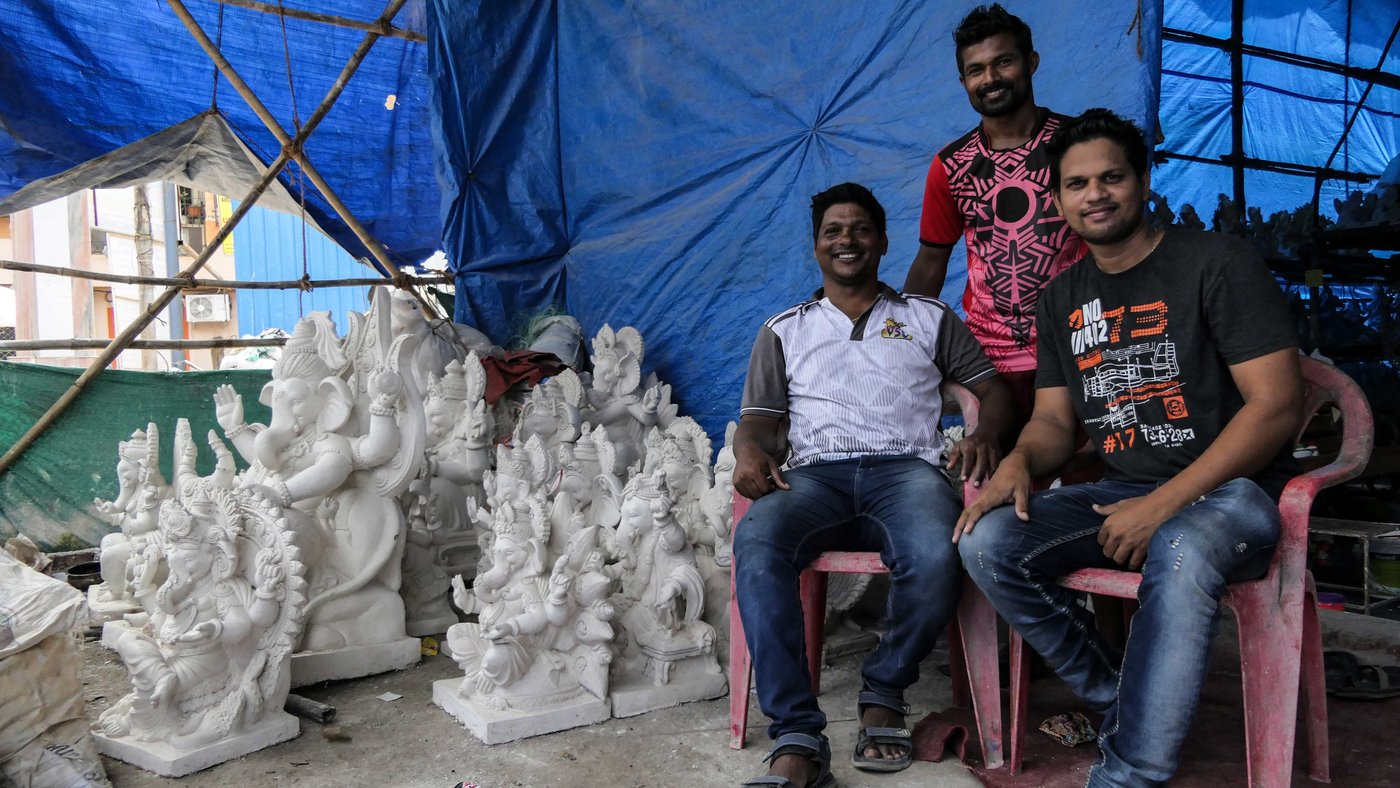
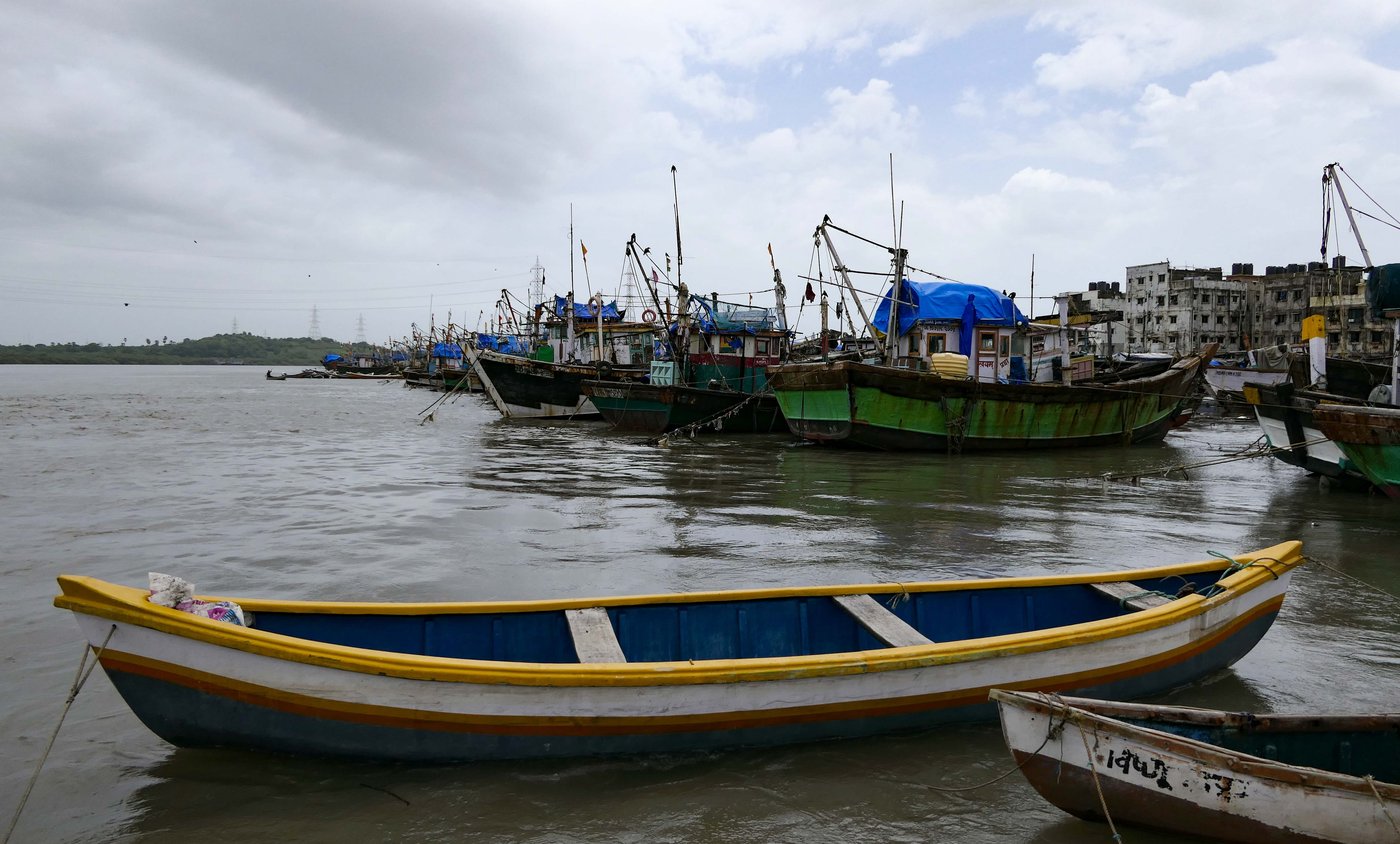
Left: Dinesh Dhanga (on the right) heads an organisation of around 250 fishermen operating small boats; its members include Sunil Kapatil (left) and Rakesh Sukacha (centre). Dinesh and Sunil now have a Ganapati idol-making workshop to supplement their dwindling income from fishing
To tide over the reduced incomes, many in fishing
families have sought other work. Priya’s
husband Vidyut worked in the accounts department of the central government
office (until he took early retirement); his brother Gautam works with Air
India as a store manager, while his wife sells fish in the Andheri market. “Now
they are doing office jobs [because fishing is no longer viable]” Priya says. “But
I can't do anything else because I am habituated to this."
Sunil Kapatil, 43, whose family owns a small boat, has also looked for other ways to earn an income. A few months ago, he has started a Ganapati idol-making business with his friend Dinesh Dhanga. “Earlier, we would go fishing in nearby areas, about an hour. Now, we have to travel 2-3 hours. We used to come back with 2-3 peti s [baskets] full of fish in a day. Now we’re struggling to catch even one peti …” Sunil says. “Sometimes, we make Rs. 1,000 [a day], sometimes we don’t even make Rs. 50.”
Still, many in Versova Koliwada remain full-time fishermen and fish sellers, struggling against the rising sea level, the rise in temperatures, overfishing, pollution, vanishing mangroves and more – along with a falling catch and smaller fish. Rakesh Sukacha, 28, who had to drop out of school after Class 8 to pitch in with his family’s income, is among those who continue to depend only on fishing. He says: “Our grandfather used to tell us a story: if you see a lion in the jungle, you have to face it. If you run away, it will eat you up. If you win [against him], you are the brave one. In the same way, they told us to learn to face the ocean.”
The author would like to thank
Narayan Koli, Jai Bhadgaonkar, Nikhil Anand, Stalin Dayanand and Girish Jathar
for their help with this story.
PARI’s nationwide reporting project on climate change is part of a UNDP- supported initiative to capture that phenomenon through the voices and lived experience of ordinary people.
Want to republish this article? Please write to [email protected] with a cc to [email protected]
